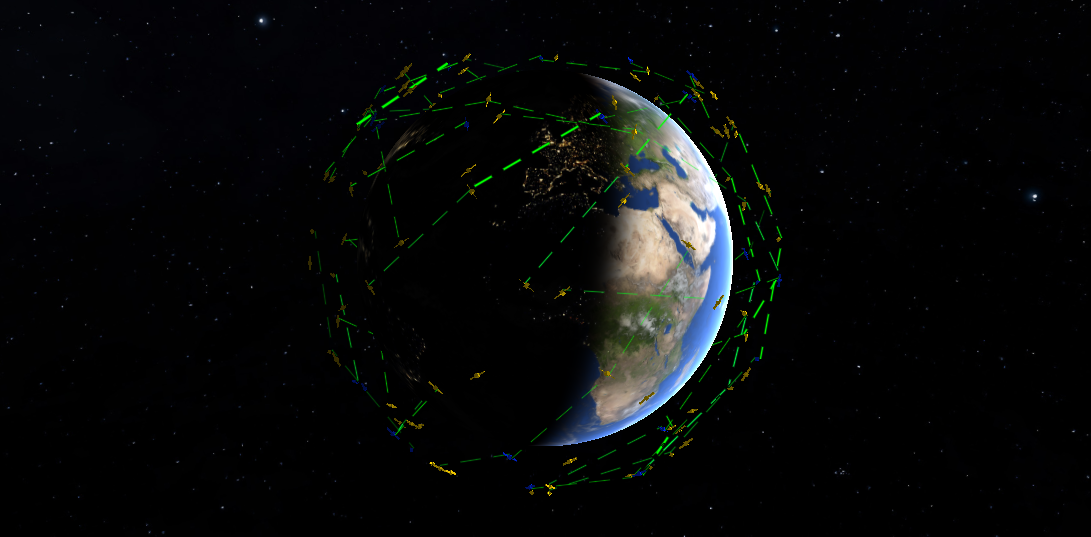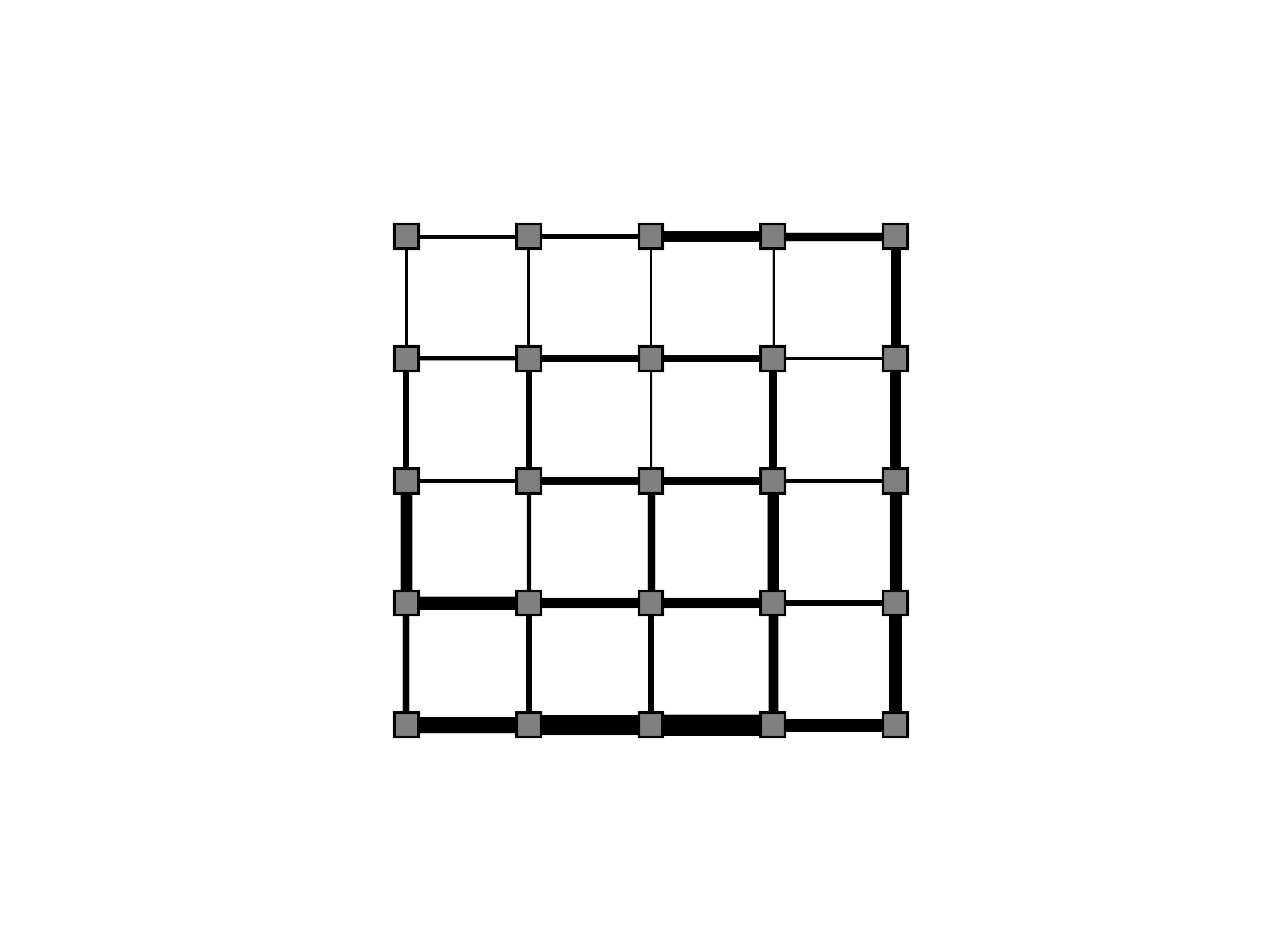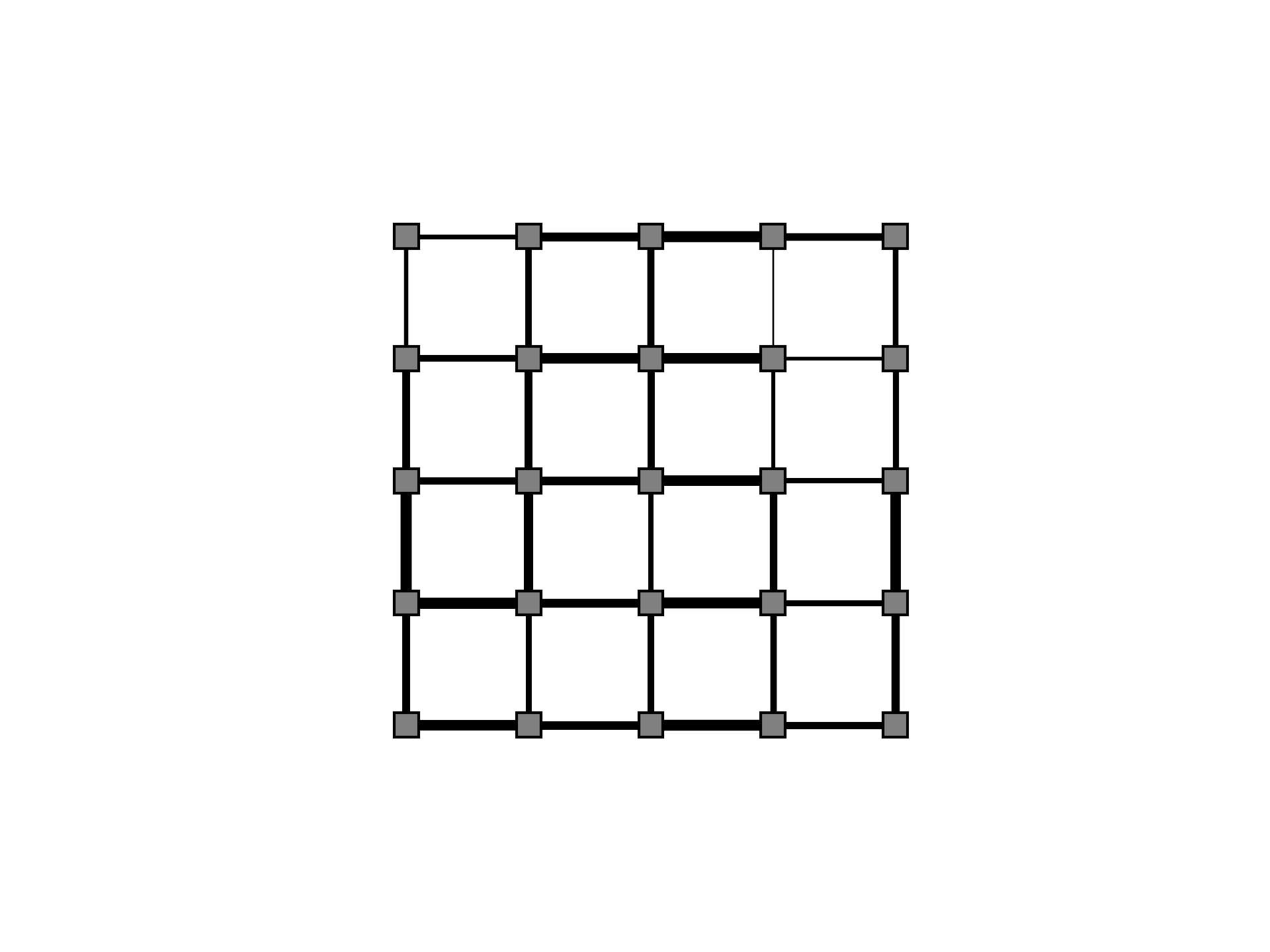Welcome to the Uninet routing demo
Uninet's low-complexity backpressure-style algorithms tackle the challenge of space communication by optimizing throughput and latency to ensure real-time data transfer and mission success.
We present an interactive demonstration of backpressure-based routing in a LEO constellation environment. The goal of this demonstration is to highlight the load-balancing characteristics of backpressure compared to open shortest path first routing.

Instructions: Scroll down to learn more about the problem and solution. To skip to the interactive demo, click the button below.
Skip to DemoHot-spot congestion in space networks
In non-terrestrial networks (NTNs), limited bandwidth resources leads to challenges in routing data efficiently.
Sensing applications, such as Earth observation, require high-quality data flows with low latency so your data is delivered as quickly and efficiently as possible.
What are data flows in space networks?
Data flows are the paths that packets take from the source to the destination.
For satellite sensing applications, this may look like data packets moving from a sensor on a satellite to another satellite that will process the data.
In general, we map data flows to service function chains (SFCs) that represent the sequence of network functions that data packets must traverse.
 Example of a flow in a satellite network. Yellow satellites are endpoints of a flow, where one contains a sensor and the other a processor. White satellites are intermediate nodes that relay data packets. Blue lines indicate the path taken by data packets. Dotted gray lines represent potential paths.
Example of a flow in a satellite network. Yellow satellites are endpoints of a flow, where one contains a sensor and the other a processor. White satellites are intermediate nodes that relay data packets. Blue lines indicate the path taken by data packets. Dotted gray lines represent potential paths.However, the dynamic nature of space networks makes it difficult to maintain high throughput and low latency.
Open shortest path first routing (OSPF) minimizes latency when bandwidth resources are abundant but causes hot-spots of overutilized links when bandwidth is scarce. OSPF causes hot-spots of overutilized links. The thickness of the lines represents the congestion level.
OSPF causes hot-spots of overutilized links. The thickness of the lines represents the congestion level.OSPF may lead to packet loss, which can be detrimental for mission-critical flows.
 Example of an OSPF flow with red links indicating congestion and packet loss. Open shortest path first routing does not consider these factors and thus affects flow quality.
Example of an OSPF flow with red links indicating congestion and packet loss. Open shortest path first routing does not consider these factors and thus affects flow quality.Solution: Load-balancing with backpressure-based routing
Backpressure is a network routing algorithm that balances network demands by using congestion information to make routing decisions. It is a distributed algorithm that uses local information from network switches to make global routing decisions. It is throughput-optimal and can handle dynamic network conditions.
 Backpressure-based routing avoids hot-spots by balancing network demands. The thickness of the lines represents the congestion level.
Backpressure-based routing avoids hot-spots by balancing network demands. The thickness of the lines represents the congestion level.Backpressure minimizes packet loss and maximizes throughput due to its load-balancing characteristics.
 Example of a backpressure-routed flow with green links that represent reroutes through less congested paths, and avoiding red links. Backpressure routing ensures that data flows are not affected by congestion.
Example of a backpressure-routed flow with green links that represent reroutes through less congested paths, and avoiding red links. Backpressure routing ensures that data flows are not affected by congestion.How to use the Uninet Satellite Visualizer
The Uninet Satellite Visualizer allows you to interact with a simulated LEO constellation network for sensor-to-processor satellite Earth observation applications.
To begin, use the slider to control the number of tracking targets. This will begin to create data flows between a randomly selected sensing satellite and its closest processing satellite. As you move the slider, you will see dashed lines appear in increasing thickness. As the congestion increases, the thickness of the dashed lines will increase.
To toggle backpressure, click the "Enable backpressure" button so it turns green. To switch back to open shortest path first routing, click the button again.
Note: When backpressure is enabled, the link congestion will quickly converge to a balanced state. This may take a few seconds. To see the effects quickly, fast-forward with the L key.
Our simulated network metrics display the real-time packet-loss, throughput and latency of the data flows. We present the instantaneous averages of these metrics in the Simulation Network Metrics tab.
Packet Loss
Impacts data quality and disrupts communication. High packet loss directly contributes to reduced throughput.
Latency
The time it takes for data to travel from the source to the destination. Used to determine the responsiveness of a network.
Interactive Demonstration
Info
Total number of satellites: 144 (12 satellites in each of the 12 orbital planes)
Number of sensing satellites: 114
Number of processor satellites: 30
Targets/Flows: Size 1.5 kB packets sent at a rate of 10 kBps.
Link capacity: 80 kBps
Simulation Details: The simulation is done at the ethernet frame level. The topology is a mesh network.

Loading Satellite Visualizer...